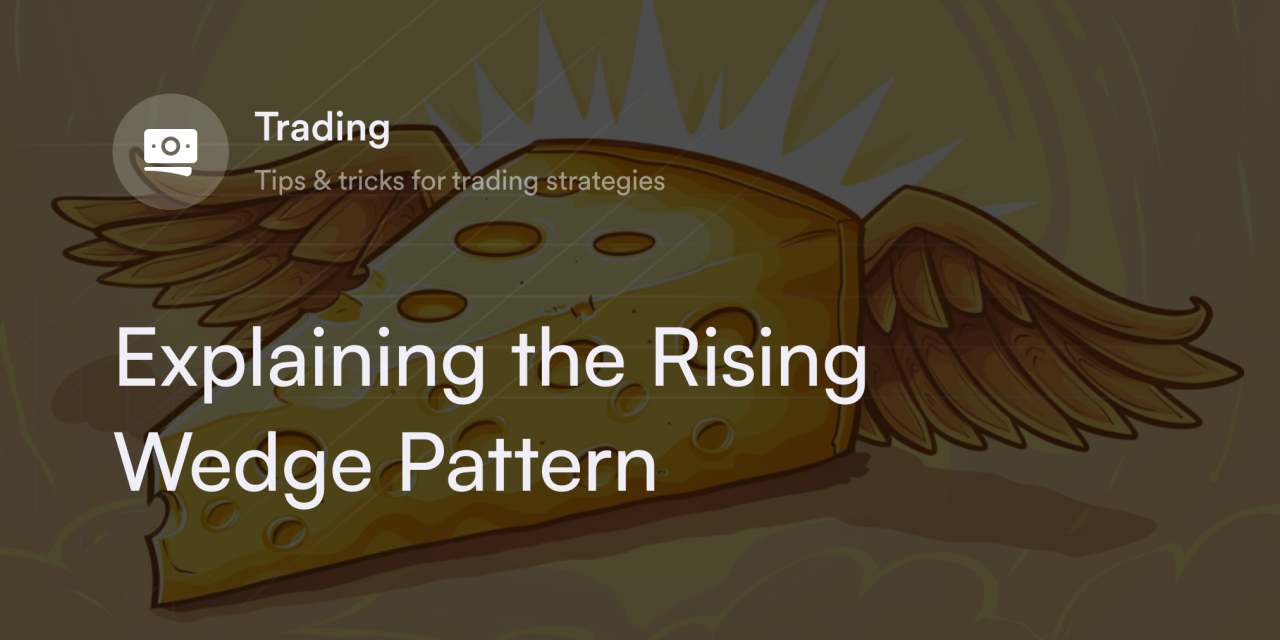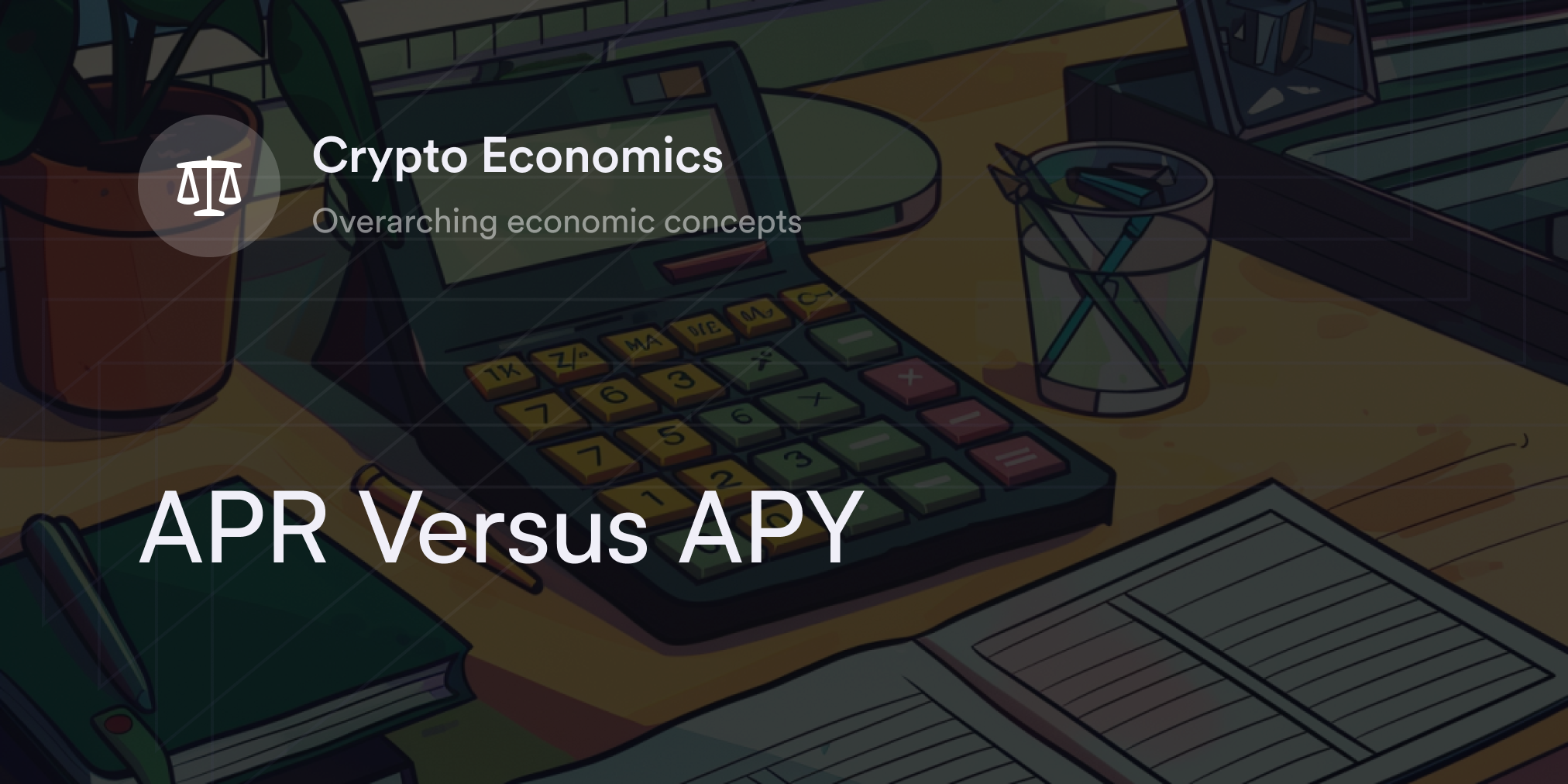


When a cryptocurrency's price consistently hits higher highs, falling for the fear of missing out (FOMO) is common for traders. It's tempting to rush into the hottest trade, but not all crypto rallies are as they appear, and there's no knowing when a recent rocket ship ride is running out of fuel.
However, crypto traders use a few technical indicators to evaluate upswings and distinguish between genuine and fake price pumps. For example, the rising wedge pattern is a well-known warning signal suggesting there's more bearish than bullish sentiment in a sudden upsurge.
In this guide, we’ll discuss the meaning of a rising wedge pattern, what it looks like on crypto charts, and how traders can use it to protect their portfolios.
What is a rising wedge in crypto?
A rising wedge is a technical chart pattern that looks like a narrowing, upward-sloping price channel, and it often signals a downward (aka bearish) trend reversal. While this pattern exists for other tradable assets (e.g., the rising wedge stock pattern for equities), the crypto rising wedge focuses exclusively on the prices of digital assets like Bitcoin (BTC) and Ethereum (ETH).
When a rising wedge pattern starts, a cryptocurrency repeatedly reaches higher prices and bounces off higher lows before reaching an apex point. Traders draw a resistance line at the top and a support line at the bottom of a cryptocurrency's candlestick chart to visualize the rising wedge pattern and predict when it's nearing its end. Generally, they expect a cryptocurrency's price to slip below the support line after reaching a rising wedge pattern's peak.
Key characteristics of an ascending wedge
On the surface, an ascending wedge pattern resembles an upward (aka bullish) price trend. A cryptocurrency’s market price in an ascending wedge constantly hits higher levels and never falls below prior price lows before bouncing back. Although a cryptocurrency's price keeps posting higher values, the support line tends to rise steeper than the top resistance line, giving this pattern its signature "ascending" shape.
Another hallmark feature of ascending wedges is they tend to correspond with a decline in average trading activity (aka volume). Traders look at the volume bar graphs at the bottom of a cryptocurrency's price chart and compare these levels with the current price action and historical averages. If volumes appear muted versus prior times in a cryptocurrency's price history, there's a good chance a recent uptrend qualifies as a rising wedge.
Is the ascending wedge bullish or bearish?
The ascending wedge pattern is one of the most deceptive images in technical crypto trading. Although it appears a cryptocurrency has strong bullish momentum in an ascending wedge channel, this pattern traditionally serves as a major warning signal and a bearish trend reversal indicator.
Some crypto traders consider ascending wedges "bull traps" since they trick bullish traders into buying a cryptocurrency in an uptrend, only to drown later in a dramatic price plunge. The divergence between lower-than-average volume and steadily climbing prices shows there isn't much demand propping up a cryptocurrency's recent rise, making it more likely for moderate selling pressure to crush a cryptocurrency's price.
Is a rising wedge pattern the same as a rising flag pattern?
Rising wedges and bull flags look and sound similar, but they're associated with different price dynamics in the cryptocurrency market.
Unlike a rising wedge, a bull flag is traditionally interpreted as a bullish continuation pattern, meaning traders expect a cryptocurrency’s price to continue rising after this image appears on a chart.
Instead of rising steadily in a narrowing wedge formation, bull flags start with long, high-volume green candlesticks symbolizing the flagpole. Following this dramatic upsurge, this chart pattern enters a short consolidation phase on lower volume. This consolidation period resembles a rectangular flag and often has a slight downtrend. After bouncing between support and resistance in the narrow flag range a few times, traders expect a bull flag to post a price surge similar to the prior flagpole on higher-than-average volume. Momentum traders typically wait for a cryptocurrency's price to break above resistance in a flag to confirm a trend continuation and enter a long position.
How to use an expanding wedge pattern in crypto trading
Because rising wedge patterns may be bearish indicators, some traders use them as a warning to get out of long positions before a crash, while others prepare to profit from an upcoming price plunge.
Whether traders prefer shorting digital assets or opening derivatives positions such as puts or short perpetual contracts, they usually enter these positions as the rising wedge reaches its apex and the price falls below the support line with higher-than-average volume. This price breakdown confirms the rising wedge pattern is playing out as expected, and there's a high probability for short positions to gain in the short term.
To predict the downtrend’s length from a rising wedge pattern, traders often measure the width between the rising wedge's lowest and highest prices and subtract this number from the highest price. There's no guarantee a cryptocurrency's price will fall to these low levels after a rising wedge, but this technique gives traders an idea of where to consider taking profits in short positions.
Rising wedges are often associated with bearish price momentum, but there's always a chance of false breakouts when using technical indicators. To avoid getting trapped in a losing position, traders research other fundamental and technical indicators to confirm an underlying bearish sentiment in the crypto market.
Even when traders decide to enter a short position during a rising wedge, they often set automatic stop-loss orders above this pattern's highest price to quickly exit a losing trade. These orders immediately fill at a trader's desired price to cut losses when a rising wedge pattern doesn't resolve in a traditional drawdown.
Find more technical analysis tips on dYdX Academy
For more tutorials on crypto trading and interpreting technical chart patterns, check out dYdX Academy for free Web3 educational content. From using indicators like the MACD to spotting warning signs of bull and bear traps, dYdX Academy has more beginner-friendly information on professional technical trading techniques.
Eligible traders can also implement their technical trading skills with a dYdX trading account. On our decentralized derivatives exchange, they enjoy deep liquidity for Bitcoin and altcoin perpetuals, plus up to 20x leverage, advanced order types, and slippage tolerance controls. Find out more about dYdX's latest products and upgrades on our official blog, and eligible traders can start trading on dYdX today.
Disclosures
The content of this article (the “Article”) is provided for general informational purposes only. Reference to any specific strategy, technique, product, service, or entity does not constitute an endorsement or recommendation by dYdX Trading Inc., or any affiliate, agent, or representative thereof (“dYdX”). Use of strategies, techniques, products or services referenced in this Article may involve material risks, including the risk of financial losses arising from the volatility, operational loss, or nonconsensual liquidation of digital assets. The content of this Article does not constitute, and should not be considered, construed, or relied upon as, financial advice, legal advice, tax advice, investment advice, or advice of any other nature; and the content of this Article is not an offer, solicitation or call to action to make any investment, or purchase any crypto asset, of any kind. dYdX makes no representation, assurance or guarantee as to the accuracy, completeness, timeliness, suitability, or validity of any information in this Article or any third-party website that may be linked to it. You are solely responsible for conducting independent research, performing due diligence, and/or seeking advice from a professional advisor prior to taking any financial, tax, legal, or investment action.
You may only use the dYdX Services in compliance with the dYdX Terms of Use available here, including the geographic restrictions therein.
Any applicable sponsorship in connection with this Article will be disclosed, and any reference to a sponsor in this Article is for disclosure purposes, or informational in nature, and in any event is not a call to action to make an investment, acquire a service or product, or purchase crypto assets. This Article does not offer the purchase or sale of any financial instruments or related services.
By accessing this Article and taking any action in connection with the information contained in this Article, you agree that dYdX is not responsible, directly or indirectly, for any errors, omissions, or delays related to this Article, or any damage, injury, or loss incurred in connection with use of or reliance on the content of this Article, including any specific strategy, technique, product, service, or entity that may be referenced in the Article.







